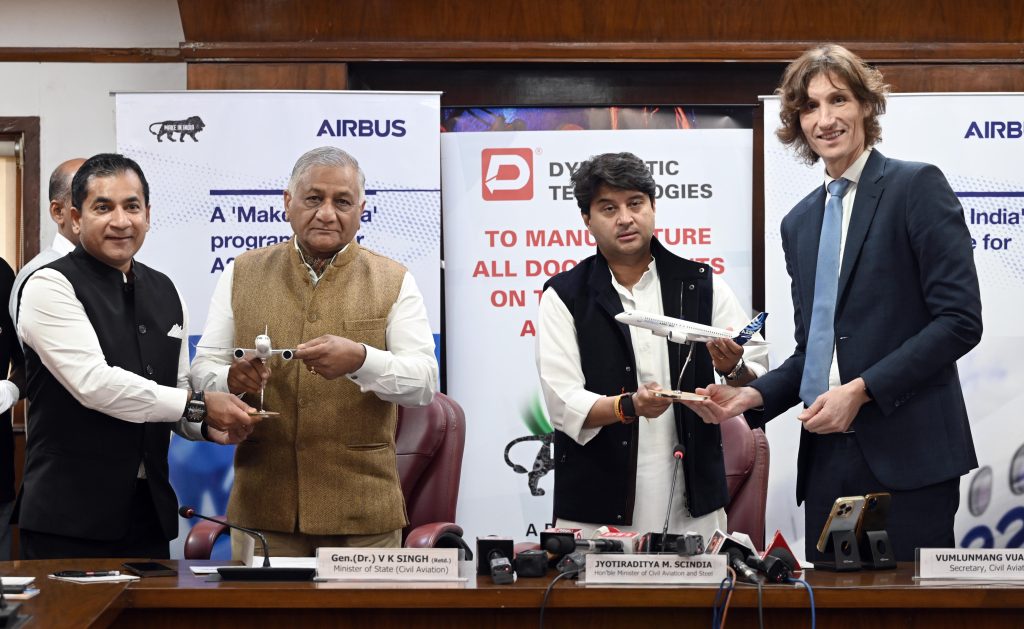Across 2021 and 2022, India signed three free trade agreements (FTAs) with Mauritius, the United Arab Emirates and Australia. India’s FTA negotiations with the European Union and the United Kingdom are also at an advanced stage.
These FTAs have considerable significance for the Indian economy as the country aspires to become a leader in the global trade ecosystem by achieving an export target of US$2 trillion by 2030.
FTA partners are expected to help India increase its exports by offering preferential and easier market access for Indian goods and services. India should use FTAs as not just a tool to increase trade but a means to induce foreign direct investment (FDI) inflows.
FTAs work well with FDI inflows when the involved economies have contrasting relative endowments and are at distinct stages of development. Conversely, FTAs and investments may clash when partner countries share similar endowments and are vying for the same FDI. India’s economic development and endowment are in sharp contrast to all its FTA partners, especially those who have signed agreements between 2021–2024.
After achieving a significant volume of FDI inflows, India has been experiencing a steady decline in the latter half of 2023. In 2022–2023, FDI inflows to India declined to US$71.3 billion from US$84.8 billion in 2021–2022. The decline continued until the second quarter of the 2023–2024 financial year. India’s rank declined from seventh in 2022 to eighth in the 2023 UN Conference on Trade and Development World Investment Report. India needs to adopt measures that can help it retain an increasing trend of FDI inflows.
India’s proposed FTA partners, such as the European Union and United Kingdom, are significant sources of foreign investment. The United Arab Emirates and Australia are also considered influential investors worldwide. India should leverage its FTAs to secure higher FDI inflows.
India aims to become a manufacturing hub and has undertaken various measures to increase its output. But it has quickly realised that domestic firms will find it challenging to achieve the target output increase alone and invited foreign players to invest in India. India may leverage its close economic ties with FTA partners and influence them to invest — potentially offering special incentives to investors from FTA partner countries.
The nation may also capitalise on the increasing popularity of the China Plus One strategy to woo investors looking for alternative destinations to set up their manufacturing plants. India should seize the opportunity by building its capacity and expanding supply chains to become a reliable alternative to China in global trade.
An FTA is an excellent platform for this purpose. If India can offer an alluring deal, many European and UK-based firms with manufacturing bases in China may find India a more lucrative option after the FTAs are finalised.
India relies heavily on China for many of its imports, ranging from candles to telecommunication and electronic goods. India’s trade deficit with China remains alarming and steady. In 2022–2023, India’s trade deficit with China increased to US$263 from US$191 billion in 2021–2022. There is an urgent need to diversify India’s import sources, particularly for critical goods. FTA partners can play a crucial role in helping India reduce its import dependence on China by offering a resilient source for the supply of goods.
Despite India’s efforts, its participation in global value chains remains limited, with a share of global merchandise exports of less than 2 per cent. India’s participation in global value chains is concentrated in a few industries, such as automobiles, pharmaceuticals and mobile phones. Increased participation in global value chains can lead to economic growth, higher productivity, job creation and improved living standards.
India’s FTA strategy must shift to recognise that FTAs are crucial tools for integrating into global value chains and attracting investments. To achieve this, India’s FTAs must be redesigned to achieve deeper economic integration and broaden the scope of trade liberalisation. This will require carefully selecting partner economies that align with India’s strategic goals and economic priorities.
The economy has long suffered from the ‘jobless growth’ phenomenon, in which the growing labour force is struggling to secure employment even as GDP continues to rise. The unemployment rate has consistently increased over the last two decades from 2 per cent in 2010 to 6.1 per cent in 2018. Securing investment, especially in labour-intensive sectors, would help India curtail unemployment. India can also secure greater access for its services exports in the FTA partner’s market.
Although India has made significant progress by holding the 40th position in the 2023 Global Innovation Index, its overall research and innovation environment is comparatively poor. India’s manufacturing growth in sectors such as mobile phones, pharmaceuticals and automobiles has been limited to assembling final products or producing goods that are at the lower end of the value chain.
The primary reason for this low innovation index is that research and development expenses in corporate housing are minimal or very low. There needs to be more effort from government agencies to encourage innovation in India. As India is negotiating an FTA with developed regions such as the European Union, which are much more advanced in terms of research and development and innovation, it can leverage its strength to secure investment in those activities.
Rahul Nath Choudhury is Trade Economist at Ernst & Young, New Delhi. The views expressed in this article are the author’s own.

